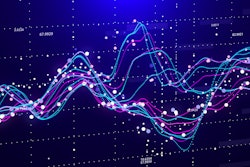
For most retailers, peak season is synonymous with the holiday rush: Black Friday, Cyber Monday, and the weeks leading up to the holidays are all well-established periods of high demand. During these times, supply chains are prepared, warehouses are stocked, and operations are optimized to handle the heavy influx of orders.
But what about those unpredictable surges that catch retailers off guard? Viral products endorsed by celebrities, sudden social media trends and extreme weather events all have the potential to create unexpected spikes in demand outside of the traditional peak season. Retailers that rely solely on historical data tied to traditional peaks like the holiday may be blindsided by these random surges.
This is where predictive analytics can offer a lifeline. By leveraging data to anticipate these fluctuations, however random, retailers can prepare their supply chains to handle the unexpected and provide top-notch customer experience year-round.
Understanding Demand Surges
While holiday shopping has primarily been the focus of major retail preparations, non-traditional demand spikes are increasingly becoming more common. With the rise of social media, viral moments, for example, have shifted how consumers shop. All it takes is for one celebrity or influencer to endorse a product for it to quickly gain popularity. With social media, a product can go from unknown to sold out overnight, leaving retailers scrambling to fulfill orders.
Additionally, as disruptive weather events become more common and catastrophic, demand for emergency preparedness items often leads to sell outs. A predicted hurricane can lead to a rush on flashlights, batteries, and bottled water, overwhelming retailers that haven’t anticipated the spike. These events highlight the unpredictability retailers face, especially in a changing world: demand no longer follows a set schedule, and retailers must adapt accordingly.
The Power of Predictive Analytics
While anticipating surges outside of peak can be tricky, predictive analytics is a solution that allows retailers to go beyond traditional forecasting – and they are excited about it! Data from UPS Capital found that merchants are excited about using AI-driven solutions (like predictive analytics) to transform the shipping industry through improved efficiency (67%), reducing human errors (58%) and optimizing warehouse operations along with inventory management (44%).
By analyzing historical sales data, consumer behavior patterns, external factors (such as weather forecasts or trending topics on social media), and real-time market signals, retailers can anticipate upcoming surges in demand, even for those that fall outside traditional peaks.
For example, predictive analytics and GenAI can monitor social media trends, track mentions of products and gauge the early-stage popularity of items. When an influencer promotes a product or a TikTok video goes viral, predictive models can alert retailers to the likelihood of a surge in demand for that product (or similar items), enabling them to adjust inventory and fulfillment plans in real time.
For weather events, predictive analytics models can integrate weather forecasting to help retailers prepare for sudden surges in product necessity. When extreme heat, storms or hurricanes are predicted, retailers can ramp up stock on essential goods and dedicate more attention to supplying items in affected regions. This helps prevent stockouts and ensures they are ready to meet the urgent needs of customers.
One of the biggest advantages of predictive analytics is that tools aren’t limited to internal data sources. They can pull from a range of external sources including social media sites, global news, market trends and even macroeconomic conditions. By pulling from these sources, retailers can use predictive analytics to get a full-picture view of potential trends as they prepare their inventories and supply chains.
Keeping Up with the Markets
In a market environment that is constantly evolving, predictive analytics offers a competitive advantage. Traditional forecasting models based on seasonal trends are no longer sufficient to meet the demands of a modern consumer base influenced by real-time events and a constant supply of information through social media. To support this, data from UPS Capital found that 44% of merchants believe that AI will help them have a predictive approach to managing disruption. Retailers that leverage predictive analytics can stay ahead of trends, manage their supply chains more effectively, and ensure that they can deliver an exceptional customer experience, even in the face of unexpected demand surges.
Ultimately, predictive analytics isn’t just a tool for managing peak seasons; it’s a year-round necessity that helps retailers navigate unpredictable demands, ensuring they remain agile and responsive in an ever-changing marketplace.
![Pros To Know 2026 [color]](https://img.sdcexec.com/mindful/acbm/workspaces/default/uploads/2025/08/prostoknow-2026-color.mduFvhpgMk.png?auto=format%2Ccompress&bg=fff&fill-color=fff&fit=fill&h=100&q=70&w=100)







![Pros To Know 2026 [color]](https://img.sdcexec.com/mindful/acbm/workspaces/default/uploads/2025/08/prostoknow-2026-color.mduFvhpgMk.png?ar=16%3A9&auto=format%2Ccompress&bg=fff&fill-color=fff&fit=fill&h=135&q=70&w=240)










